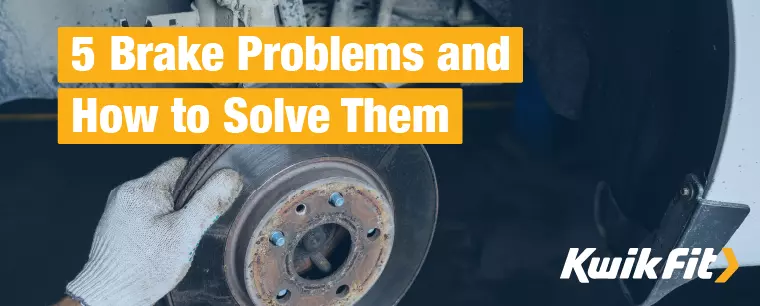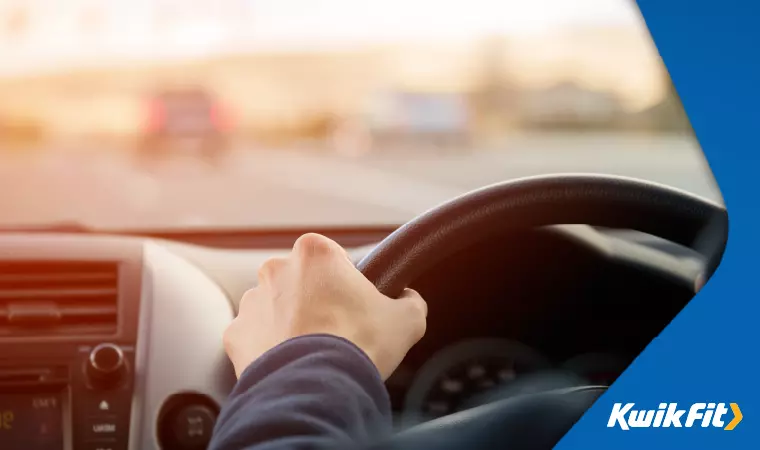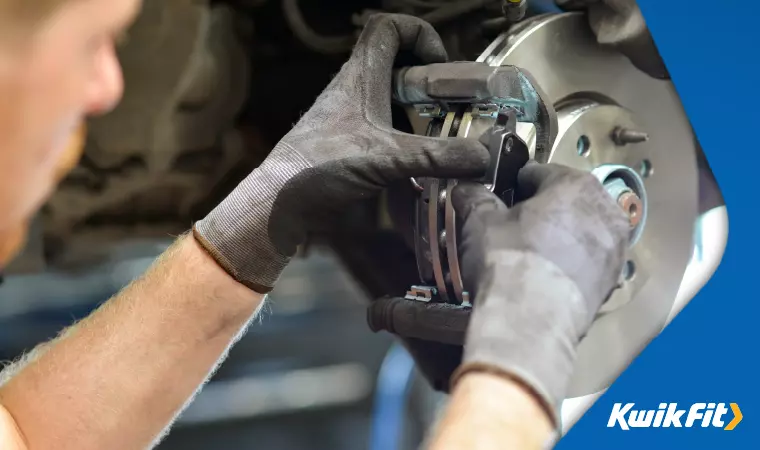5 Brake Problems and How to Solve Them
Jack Dreyer | Tuesday 14th March 2023 4:00pm

Despite being one of the most important components of a car, brakes also tend to cause the most problems. As you may expect, this is directly due to the job tha brakes have to do: theyíre in constant use while driving and have to withstand a huge amount of wear and tear.
Whatís more, ignoring these problems can have serious consequences and can put you and other drivers at serious risk, which is why itís so important that regular maintenance and checkups are carried out.
To help give you a better idea of what signs to look out for, here are five brake problems and how to solve them.
1. Thereís no resistance on the pedal
A common problem many drivers experience is when the brakes feel soft or spongy, or the pedal has barely any resistance when engaged. If the pedal sinks right down to the floor without you having to push down much, this can be a sign that there is a leak in the brake system. After all, the point of pressing down the brake pedal is to compress the brake pads onto the discs. If the pedal doesnít feel any resistance then nothing is being compressed.
A leak can therefore be extremely hazardous and make an accident quite likely Ė itís very hard to stop suddenly when you canít stop very well at all. Itís a good idea at this point to avoid driving the car at all and instead call for roadside assistance to get your car to a professional mechanic.
The first thing you should do in this instance is to check the brake fluid levels under your bonnet. If you are unsure of how to do this, check your ownerís manual or take your car to a local garage. You can learn how to top up a low brake fluid reservoir here Ė if the fluid seems to hold resistance, doesnít seem to be reducing at a fast rate, and thereís no clear sign of a leak, then it may be that you just needed to top up the fluid.
Continue to drive carefully and take your car to your local Kwik Fit centre as soon as possible for professional confirmation of safety.
2. The vehicle pulls to one side
If you notice that your car pulls to the left or right when braking, it could indicate several different problems.
For example, a common reason for this to happen is a frozen caliper on one side. A caliper is a mechanism on a disc brake that squeezes two pads against a rotor, creating friction and causing the speed of the car to reduce. The caliper can become stuck due to rust, corrosion, after a car accident Ė or simply due to a lack of maintenance. This can result in uneven pressure on the pads, which can make the car pull to one side.
To fix this problem, you may be able to clean and lubricate the caliper mechanism yourself by buying a special maintenance kit. However, this can be tricky to do and, if the problem is serious, it may be that itíll be more effective to replace rather than clean. Although this may cost more than cleaning the brake yourself, itíll save a lot of money in fuel costs Ė not to mention the potential nightmares of accidents!
Other possible reasons why a car pulls to one side is a faulty master cylinder, worn rotors, a collapsed brake hose, or brake fluid leakage. Again, you need to identify the fault and have it checked out right away. You can get a free visual brake check at any Kwik Fit centre.
3. The steering wheel is vibrating

Another problem that a lot of drivers experience is the steering wheel vibrating or shaking when the brakes are engaged. There are many possible reasons why this may happen, including warped front rotors, irregularities on the rotors from excessive heat or problems with the pad impressions. This is separate from issues with tracking, which can cause the steering wheel to shake and judder when driving at speed.
As a general rule of thumb, if you feel a shaking in the steering wheel, itís likely that the source of the problem is located somewhere in the front of the car.
One way to tackle this issue is by having the rotors resurfaced. If theyíre not thick enough to be resurfaced, you may need to have them replaced altogether. If you have disc brakes in your vehicle, they may also need to be replaced.
4. The brakes are pulsating
Similar to a vibrating steering wheel, pulsating brakes are usually caused by warped rotors. Rotors are constantly being heated up and cooling down when you drive, meaning that they can become easily worn and lose their shape over time.
This can be made worse if you do a lot of long distance driving or are harsh on your brakes.
The solution to this problem is much the same as what you would do when the steering wheel vibrates. The simple answer is to resurface or replace the rotors. You may also want to replace the brake pads or have them checked to make sure that they are fitted properly as they can also suffer from excessive wear and tear.
5. The brakes make an unusual noise

When brakes are used, there should be minimal noise. However, sometimes you may notice a squeaking, grinding, or groaning sound when pushing on the pedal. If this is the case, you should take your car to a specialist mechanic as soon as possible as the brakes will probably need to be readjusted in some way.
There are several reasons why brakes can make these kinds of noises. For example, there may be damage caused to the brake lining, pads, drum or springs, or something may have been incorrectly installed. An unusual noise may also signal that the wheel bearings are loose, that there is excessive lateral runout of the rotor, or the caliper has been incorrectly aligned.
The above problems can put you in serious danger if they are not dealt with properly, so itís important to make sure that if you notice any of these signs you take action right away. Having your car regularly serviced can not only help to fix these faults and improve the safety of your vehicle, but it can also prevent any further issues from developing in the future and save you money.
If you require assistance or have any questions about your carís brake system, why not get in touch with Kwik Fit today? You can book a free visual brake check online for peace of mind or a full comprehensive brake inspection to pinpoint any issues, either now or in the near future.
Any facts, figures and prices shown in our blog articles are correct at time of publication.
Featured Articles
Is it Illegal to Drive With One Headlight?
Saturday 19th July 2025
Wondering if itís illegal to drive with one headlight? Learn about the safety risks and penalties of illegal blown bulbs and why you should fix them promptly.
Air Con in EVs & Hybrids: Experts Answer Your Questions
Monday 30th June 2025
Does air con drain EV batteries? Can you use the air con while charging an electric car? Find out the answers to these questions & more from Kwik Fitís experts.
Why Is Your Car Making a Noise? Fixes & Tips
Friday 13th June 2025
When your car starts making unexpected noises, it can certainly be quite disconcerting; it may be nothing to worry about, but hereís what you need to know.









